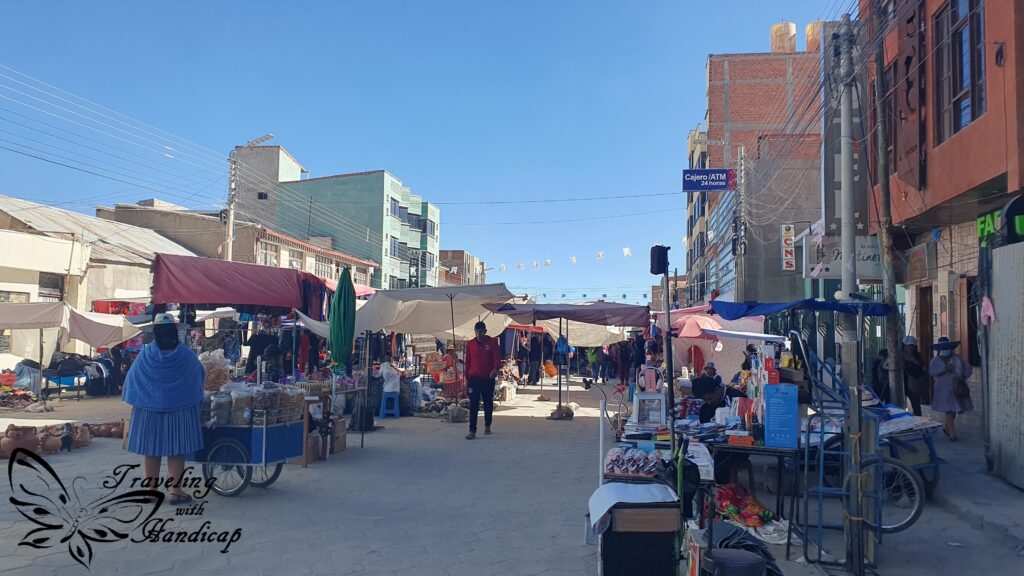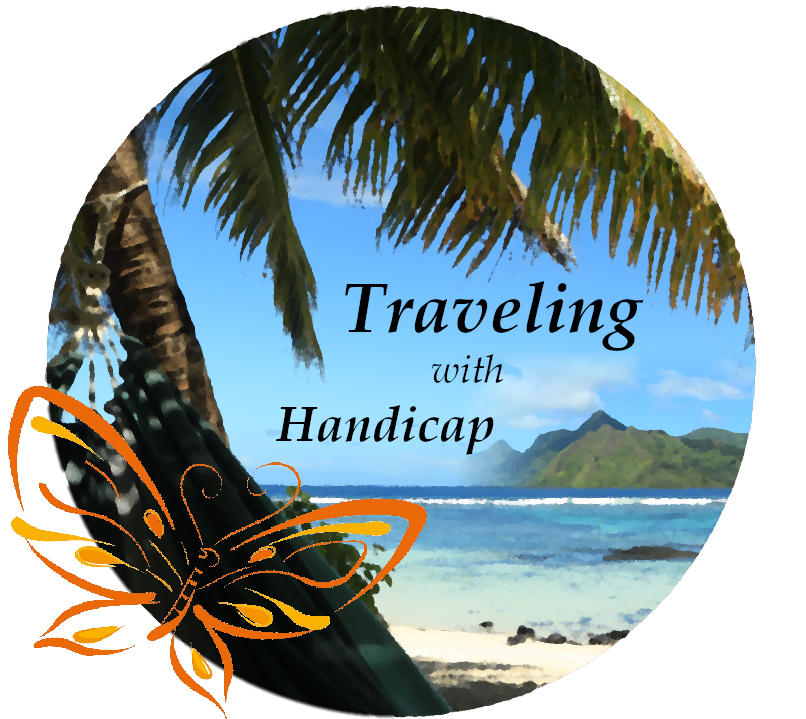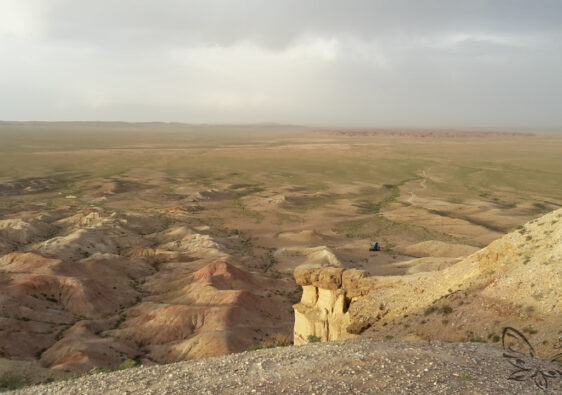No one realizes how beautiful it is to travel until he comes home and rests his head on his old, familiar pillow.
Lin Yutang
Border crossings into and out of Bolivia
Coming from Argentina, La Quiaca, to Villazón.
If you come from northern Argentina, you might cross the border by bus, but only if you start your journey from Salta. I have heard that some buses connect Salta with southern Bolivia. However, if you want to stay at one or the other place along the way, the only option is to take an Argentinean bus until La Quiaca, walk across the border and take a Bolivian bus from Villazón.

Strike of the Teacher’s union
I had to pick the latter option. I took the bus from Huamahuaca to La Quiaca, intending to stay there for one night and cross the border the next day. However, the border was blocked from Bolivian side due to a protest of the Teacher’s union. Weekends are truly weekends in Bolivia, so no strikes during Saturday and Sunday. I had to wait for one day in La Quiaca until I could cross into Villazón on Saturday morning.
Crossing
When I crossed the border, there was a time difference of one hour between Argentina and Bolivia. We have been told that the border opens at 7am, the “checkout process” on the Argentinean side started at 7 am. However, we had to wait for one hour basically on the bridge crossing the river which is the border. Only after one hour, the “check in process” started on Bolivian side. I only got a stamped piece of paper, my passport was not even properly checked. At other borders, when leaving the country (or entering from northern Chile), the passport check was thoroughly performed as expected.
Don’t take out cash from ATMs in Villazón, they are not too trustworthy. Just have enough Argentinean pesos to exchange for a few Bolivianos to pay for the bus. As soon as you are in Tupiza or Uyuni (or where you want to go to), get cash out there.
Leaving from Uyuni to Calama, Chile.
There are no fixed rates for buses in Bolivia. There are also no online systems which show you the price as soon as you select a journey. Instead, you should ask in different offices for prices, maybe even negotiate. My way of negotiation was requesting a discount due to my disability. In the end, I went with the company offering me a good price. There are a few companies offering rides from Uyuni to Calama. Sometimes, they even continue until San Pedro or Antofagasta. My bus went until Calama.
We wasted approximately 2 hours at the border because we were not allowed to enter Chile. Not because of any passenger, but because our driver didn’t have a permit for people transportation in Chile (with him). So we had to wait for another driver. Well, at least they sold food at the Argentinean border (as well as on the Chilean side later).
Which tour should I consider?
At one point, you should be in Uyuni because all tours either start and/or end there.
- If you have little time available: 1-day tour from Uyuni visiting the Salt Flats
- If you come from northern Argentina:
- traveling only until Tupiza: 4- or 5- day tour from Tupiza to Uyuni
- traveling to Uyuni and picking options from Uyuni
- If you are in Uyuni and if you have the time and budget: 3-days tour (or even 4)
- either from and to Uyuni
- or from Uyuni to San Pedro de Atacama
- If you are in San Pedro: 3-days tour from San Pedro to Uyuni
4 days tour from Tupiza to Uyuni
When I stayed in Córdoba, Argentina, a couple recommended me picking a 4-days tour from Tupiza to Uyuni. I checked different tour providers and even went with the same one as that couple. I could have taken the option of another provider to go on a 5-day tour. This would have included 1 day of hiking a volcano of more than 6000 m. However, I didn’t want to risk anything as my highest altitude until this time was 4350 m.
My tour was in Spanish. We met the other 4×4 vans along the way, and I didn’t hear guides speaking English. I was able to understand most of it, however, English would have been much more relaxing (as I don’t have to concentrate as much). Maybe, there would have been tours in English starting from Uyuni. I am quite sure that tours from San Pedro are offered in English. I only heard that English tours would be more expensive (not sure if this is true).
Tupiza
I liked the town Tupiza, it is rather tiny and has a cozy, lively center with some colonial style buildings. Its market was nice and cheap food was available at all corners. I especially liked the Empanadas, they were both sweet and savory. Even though you get Empanadas across Chile and Argentina, I had the best ones in northern Argentina and southern Bolivia.



Day 1: from Tupiza to Reserva Nacional de Fauna Andina Eduardo Avaroa
Rough rocky landscape with interesting rock formations. Within the rocks, we often saw llamas and vicuñas.
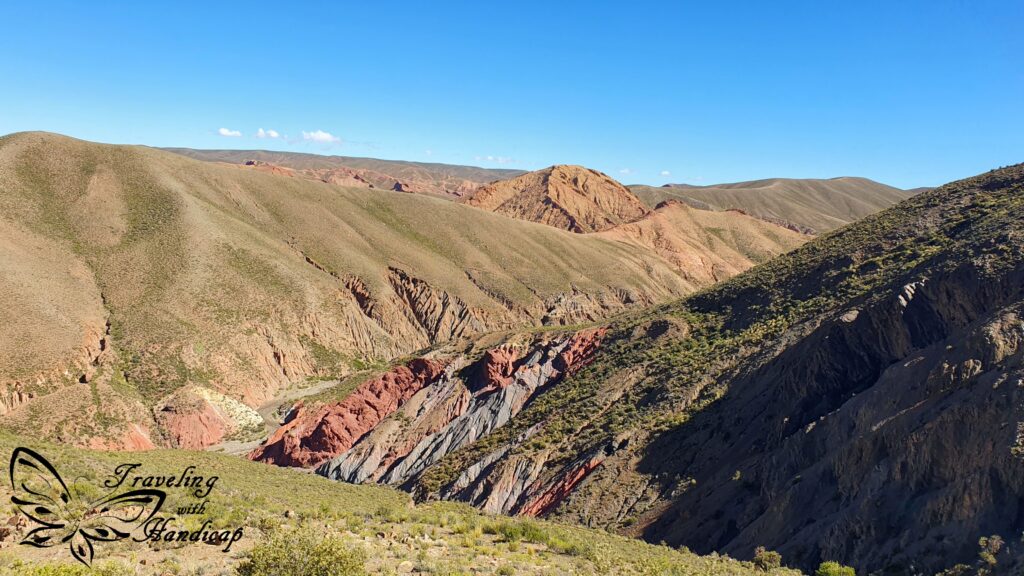
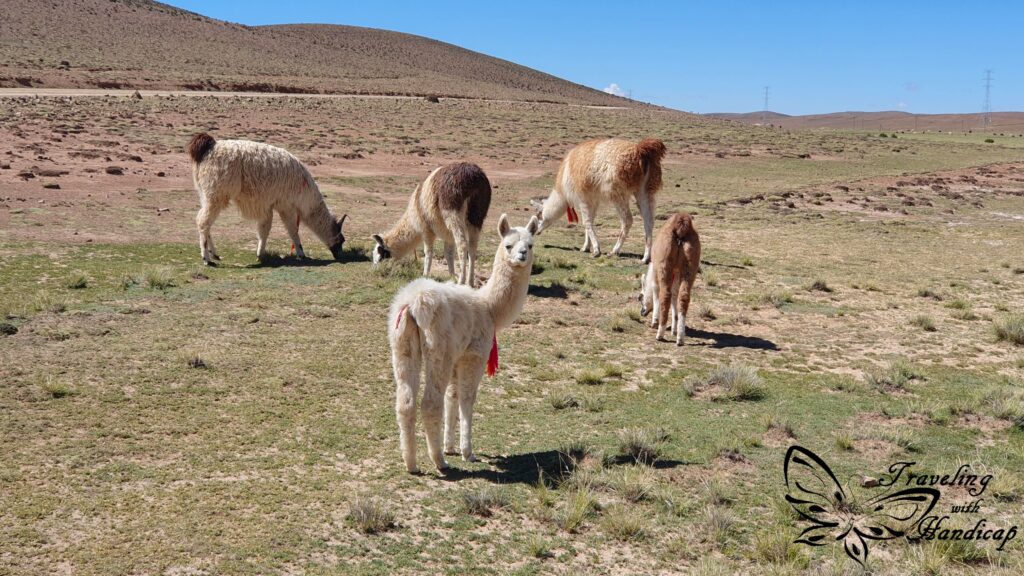
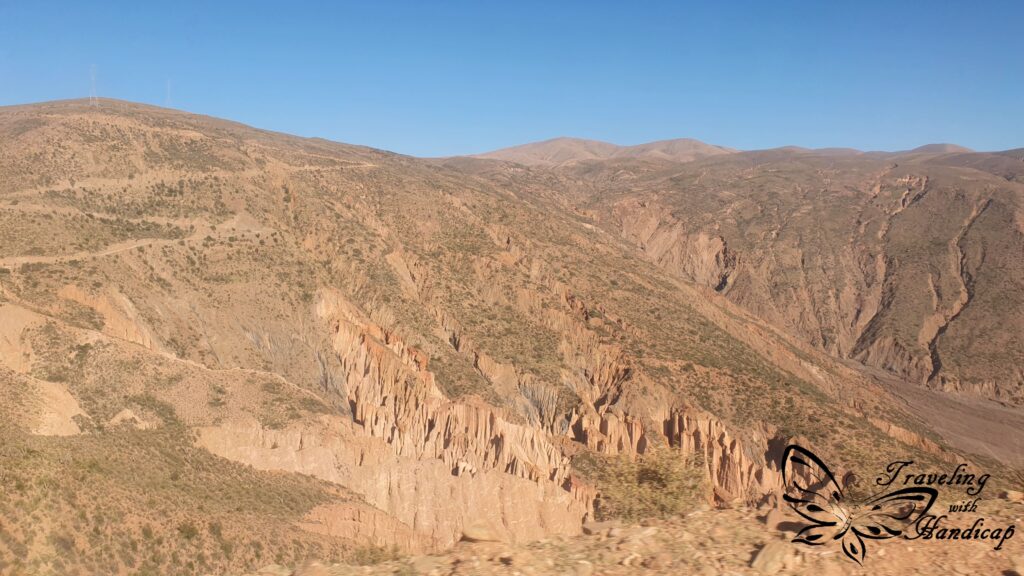
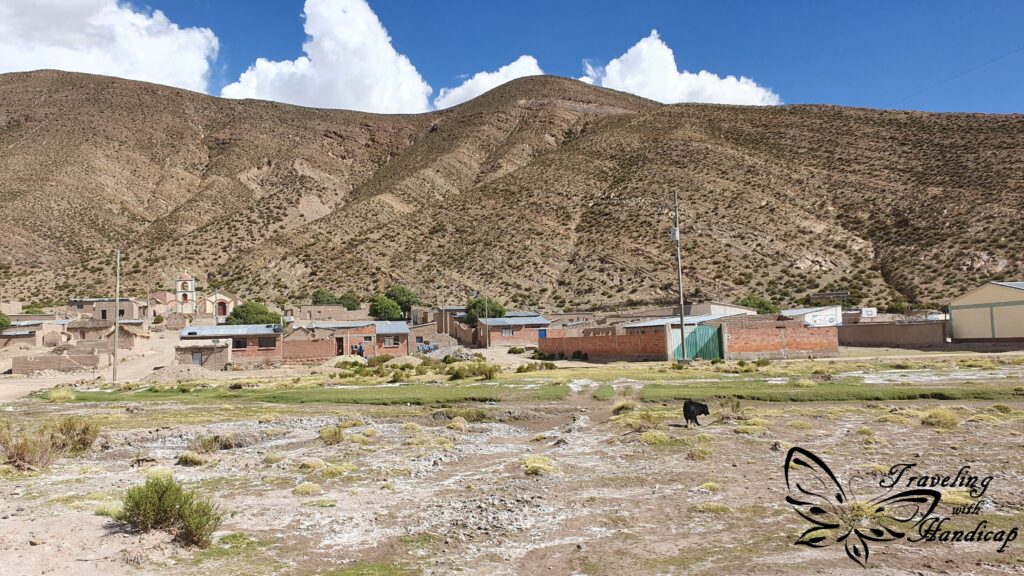

Gaining altitude, therefore, drinking a lot. I learned that the Bolivian expression for “outdoor toilet in the wild” is “baño del Inca”.

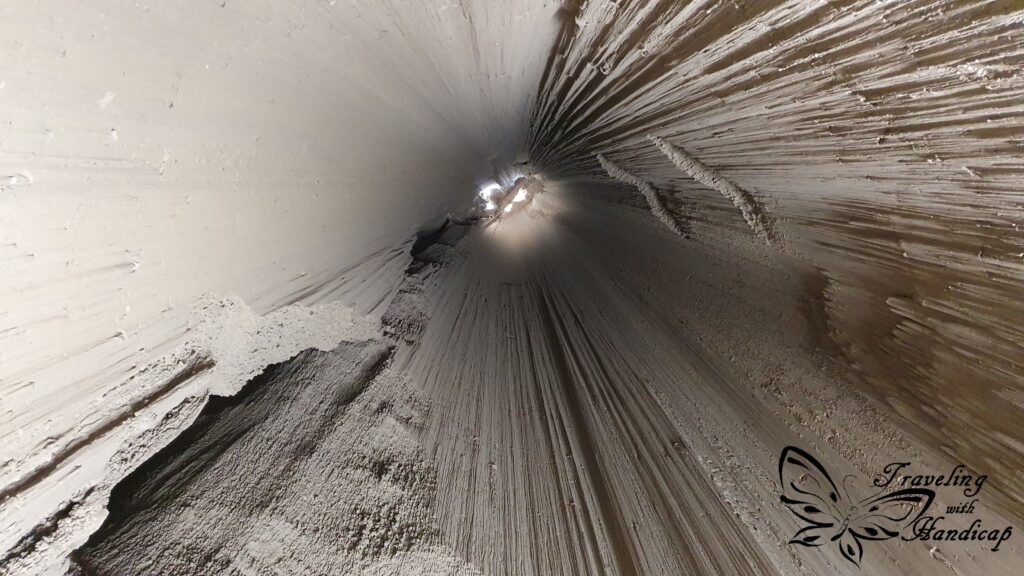
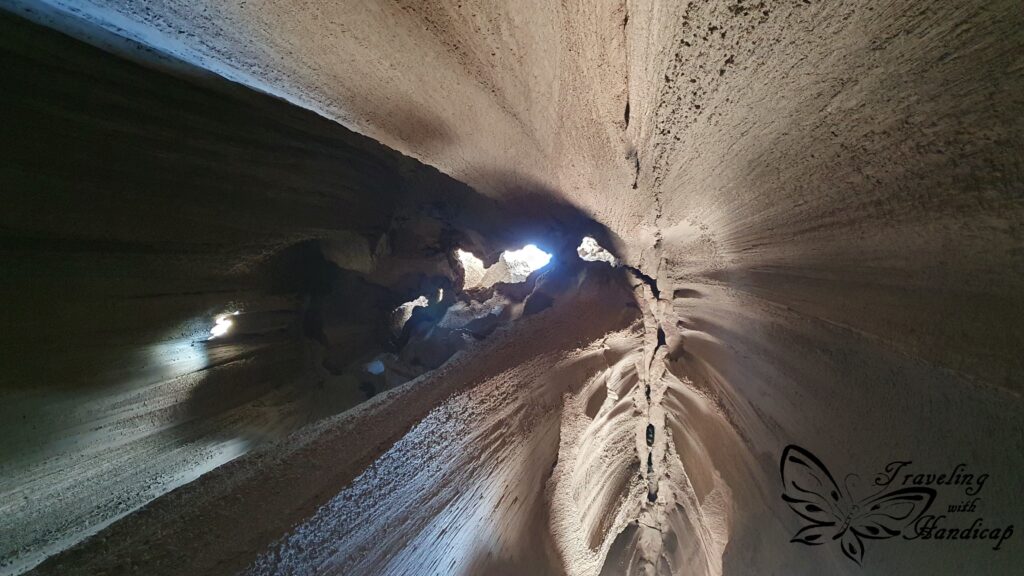
We stopped at a former village from colonial time when natives were kept as slaves to work in the local mines. They had to dig for a variety of minerals, including silver. The remains of the village are kept for tourists and to increase awareness.

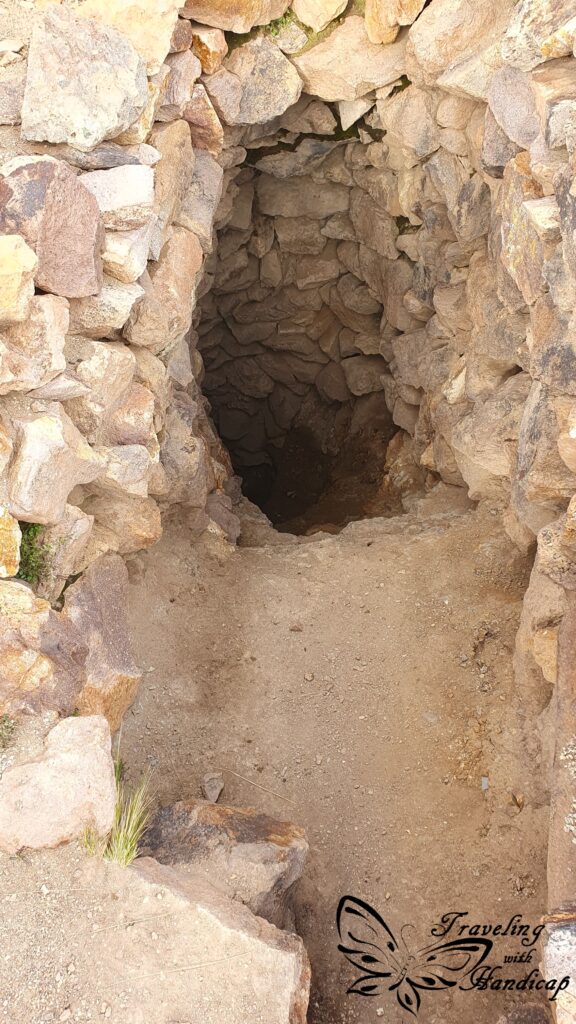
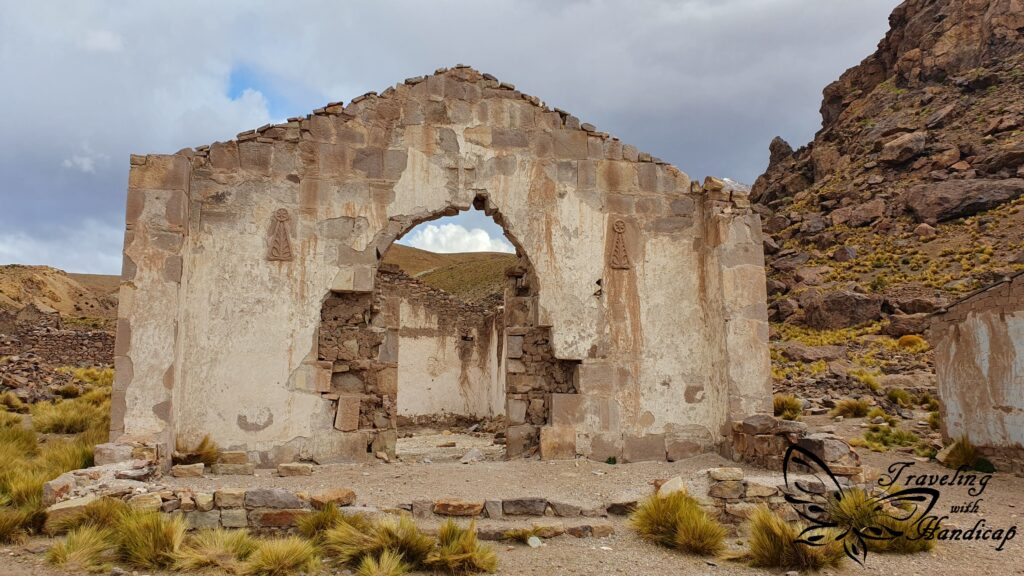
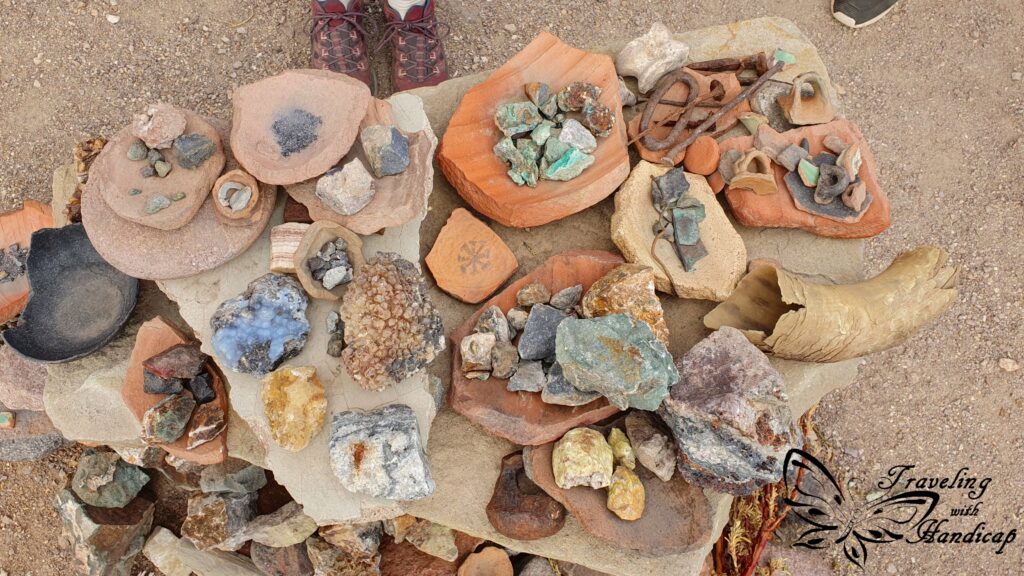
We also crossed a laguna at high altitude, great landscape also for photography.

In the evening, we entered the Reserva Nacional de Fauna Andina Eduardo Avaroa (National Park fee!). We concluded the day with great dinner, first tea and coffee with crackers, then amazing vegetable soup, then a meat/vegetarian dish.
Day 2: The Reserva Nacional de Fauna Andina Eduardo Avaroa
Our first stop after early breakfast was a farm which had many llamas within a fenced area (I prefer llamas in the open landscape).
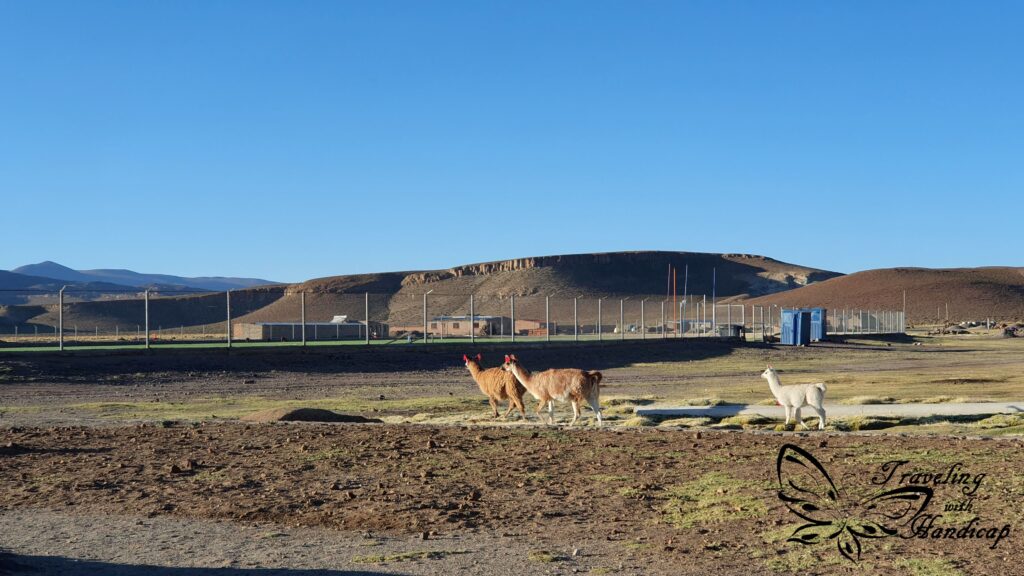

Another laguna with some flamingos (the majority of flamingos was already in Peru, season dependent), we had great reflections in the water. Moreover, we got to walk a little along the lagoon. This way we could truly absorb the atmosphere.
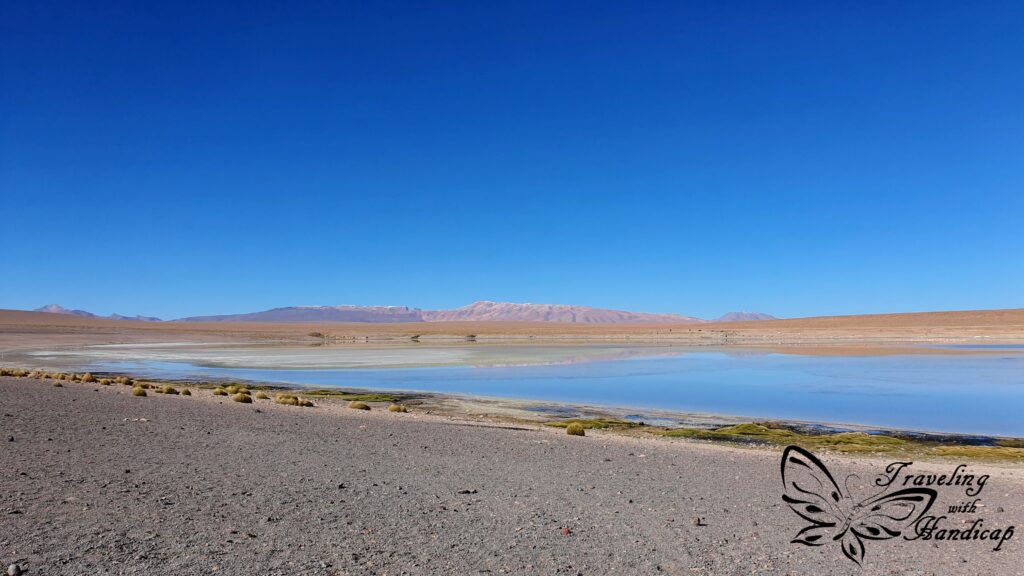


The next stops were the Polques hot springs, my favorite spot of the day. There were two pools of different temperature to stay in and enjoy the temperature of water with the view. A very special location! We had 30 minutes to stay in the water. It was sufficient, even though the landscape was special enough to stay longer.

From the hot springs, we continued south to the Dali Desert. It is very flat, but volcanic stones are spread around a large area. This is due to the explosive eruptions of the surrounding volcanoes (when they were active).


Then, we went to the southernmost location of the tour, already very close to the border with Chile (San Pedro de Atacama) to visit both the Laguna Verde and Laguna Blanca. The water in Laguna Verde is highly toxic, even touching it would kill you. Therefore, everyone stayed at the Mirador without complaints. 😉
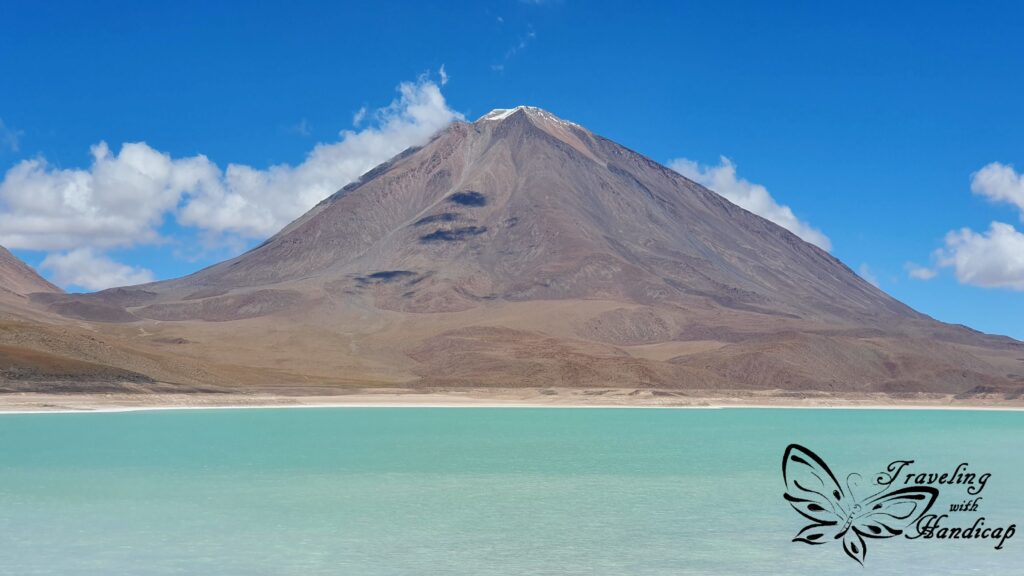
Then we went back north and had lunch next to the hot springs. After lunch, we couldn’t depart for a while as multiple drivers (including ours) helped another driver fixing something on his car.
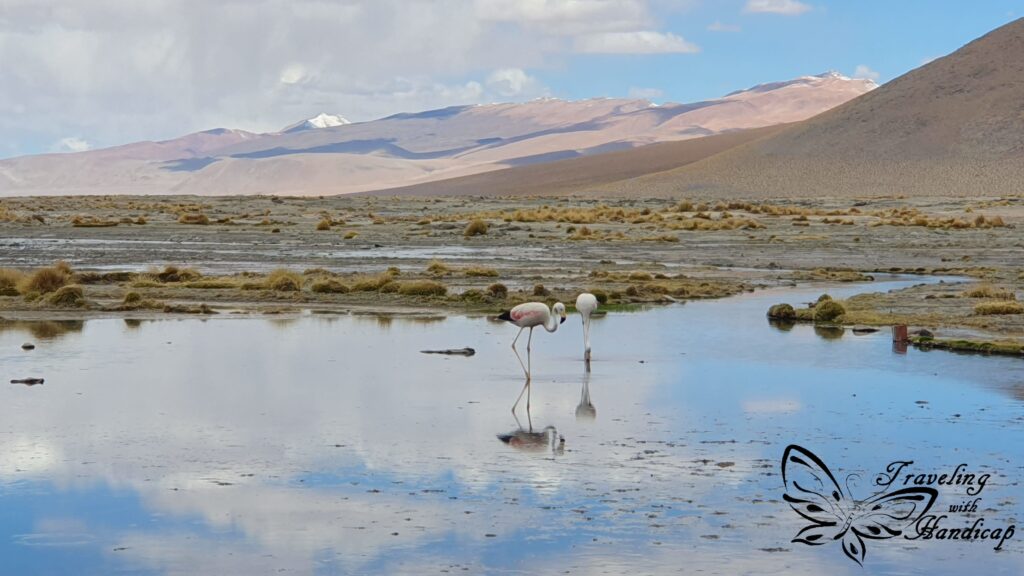

After lunch, we went to the Laguna Colorada where many flamingos live. We indeed saw many. During southern summer, there would be hundreds of flamingos more.
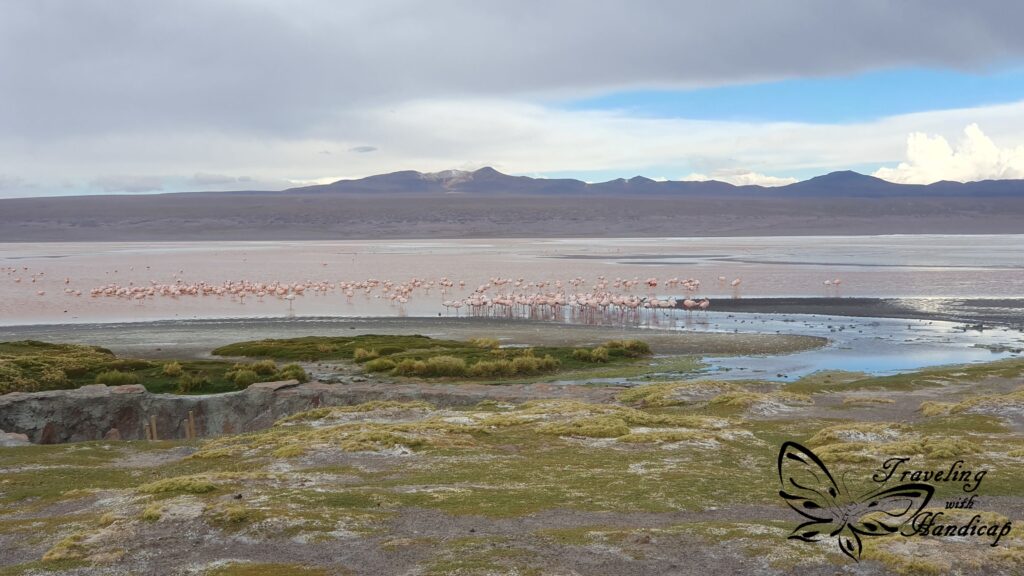
Then, we visited an area of thermal activity, with holes in the ground where it was bubbling and damping a lot. There was the highest point of my tour, at approximately 5000 m.


This night, we slept in a little village just out of the Reserva Nacional.

Day 3: Between Reserva Nacional and Salar de Uyuni

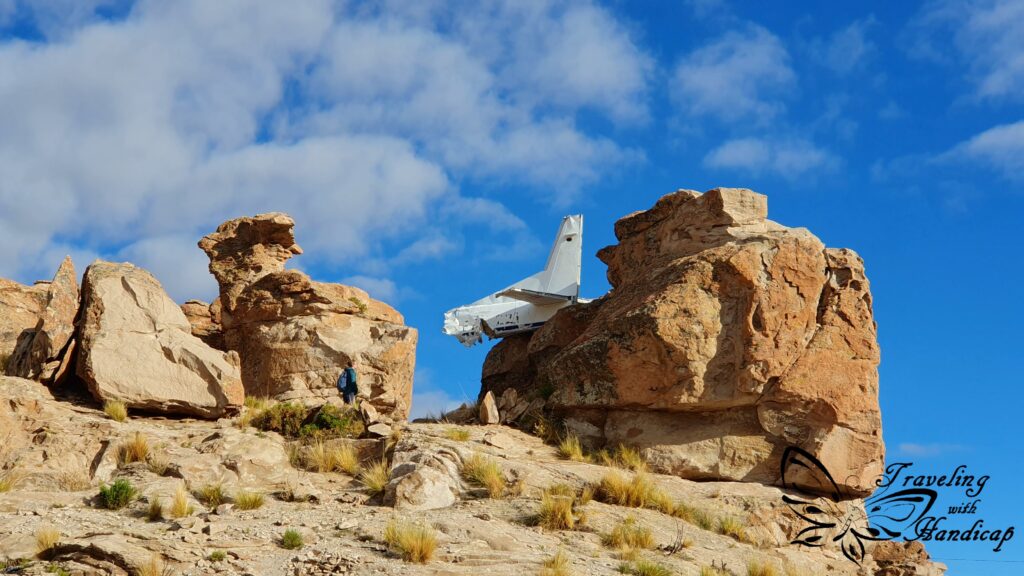
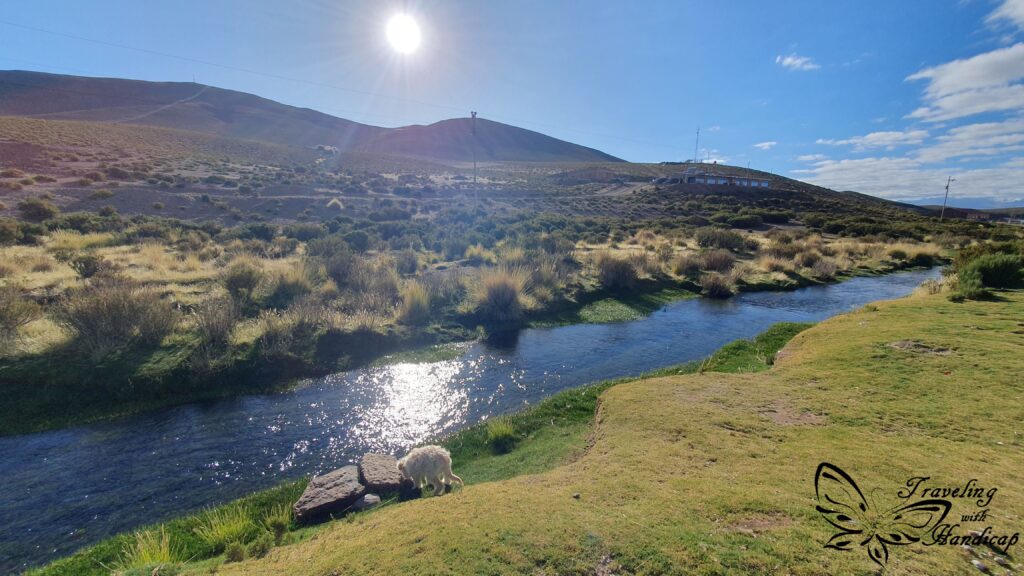
In the morning, we visited the Italia Perdida, a great rock formation, and even climbed up one of the big stones. From up there, the view was even more majestic. Italia Perdida belongs to the Valle de las Rockas.


The next stop was a little laguna, actually my most favorite place of the whole tour, but I cannot find its name. I think it’s called Laguna Katal, but cannot find it on maps. Well, maybe I figure out the correct name, then I would update this.


Afterward, we continued to the Cañon de la Anaconda. On the drive to and from the Cañon, we passed a landscape of many quinoa fields. The harvest season just started in the beginning of April, so we saw the pink, purple, and green quinoa plants both standing upright and people harvesting them.
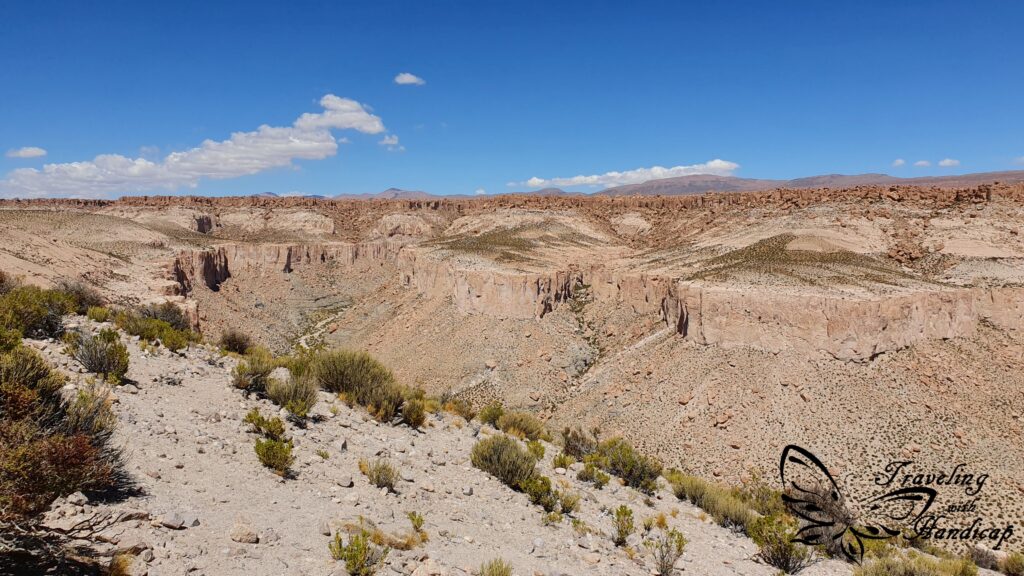

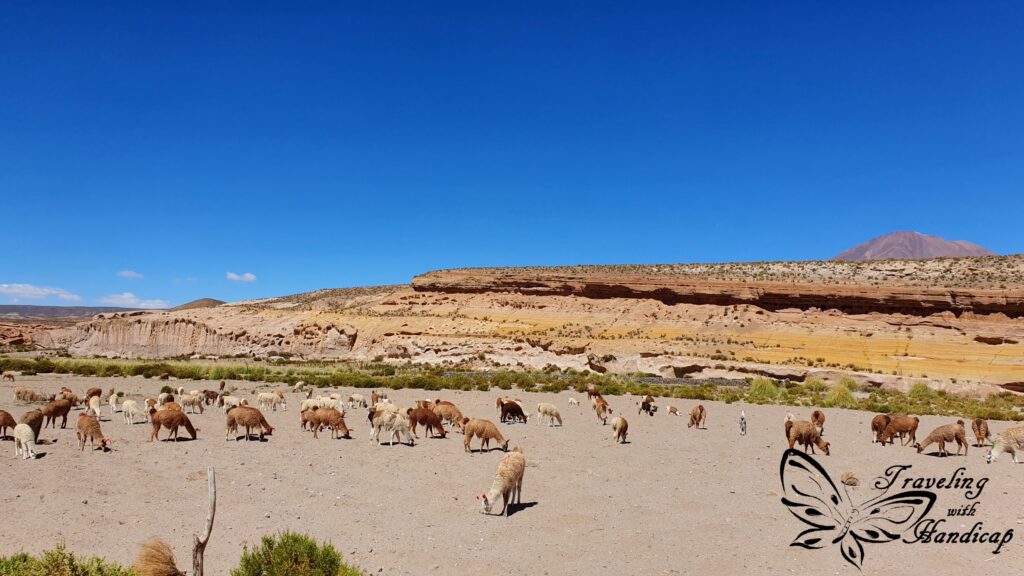

Then, we stopped in the village San Cristóbal village, had some beer and other snacks while checking out the train graveyard and playing foosball.
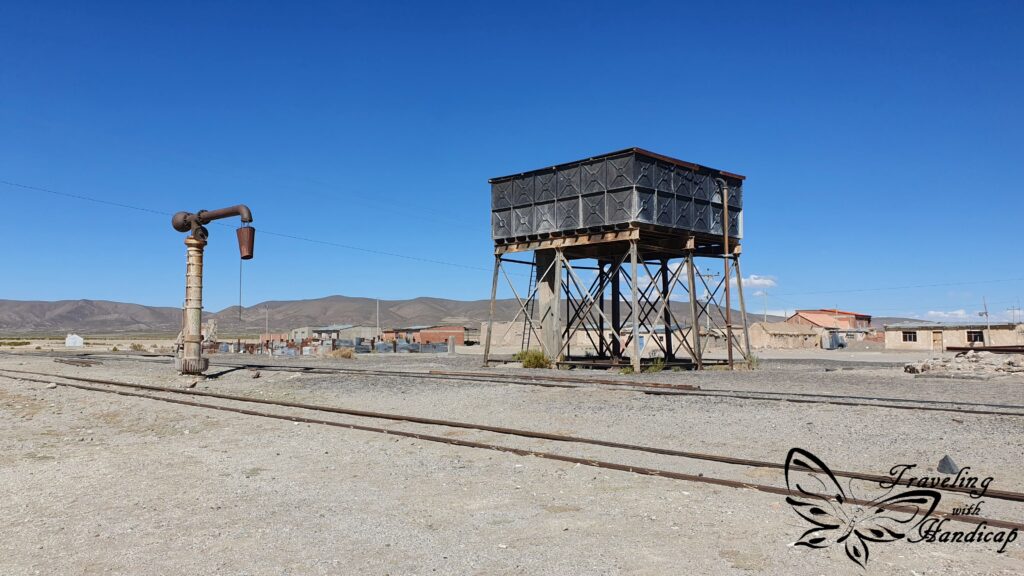
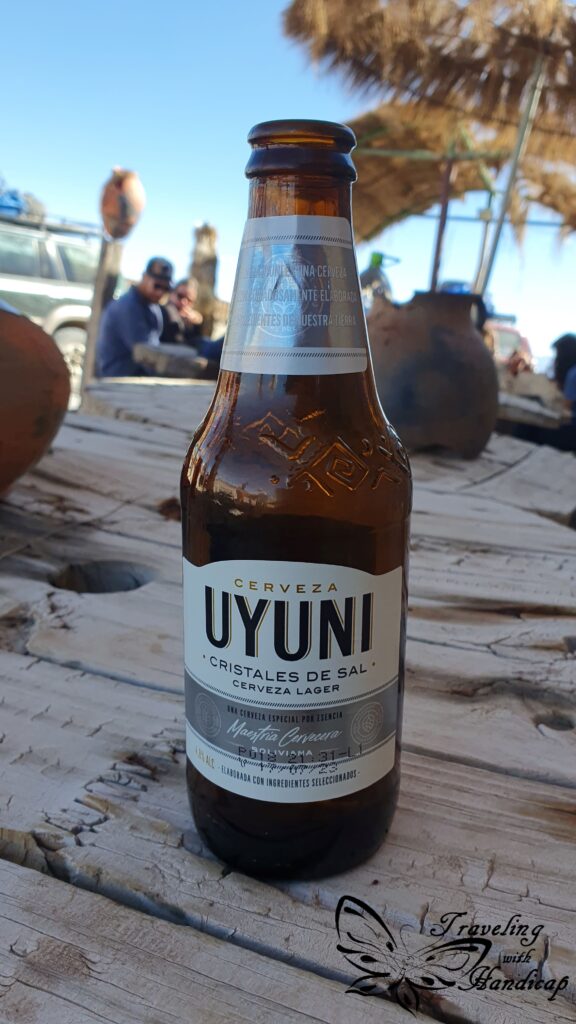

We then arrived in our hotel for this night, made out of salt. It was quite cool to sleep in a room with walls, floor, and roof made out of salt. We checked in quite early because we had to be ready to leave again before 6pm.

This was because we watched the sunset on the salt flats, quite cool!
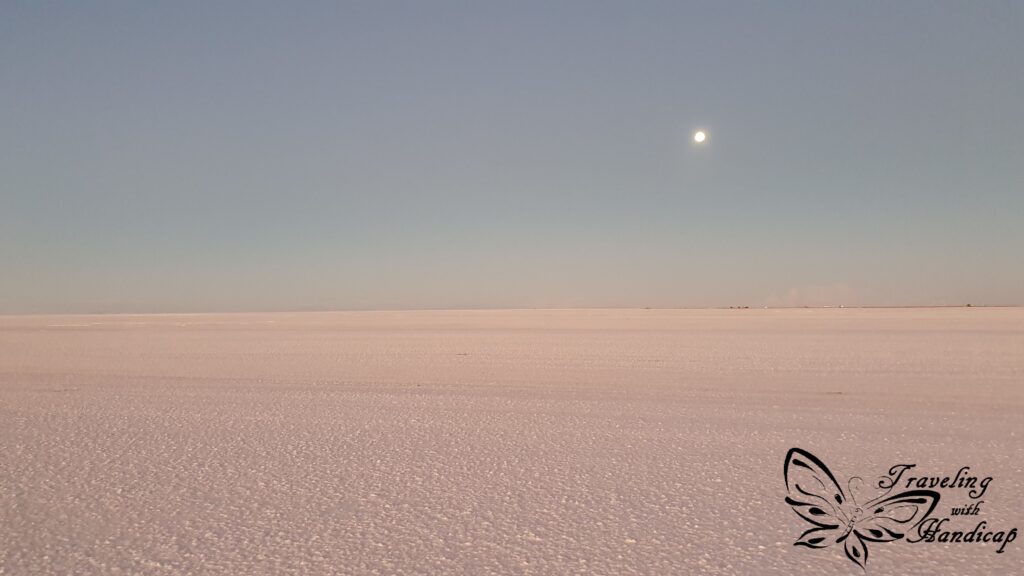
Day 4: Salar de Uyuni and Train Cemetery
Sunrise on the Incahuasi Island in the middle of the slat flats. This island is made of fossilized coral. Its cacti are up to 1000 years old. Very magic, nothing more needs to be added. Then we had breakfast on little stone tables right next to the island, on the salt.
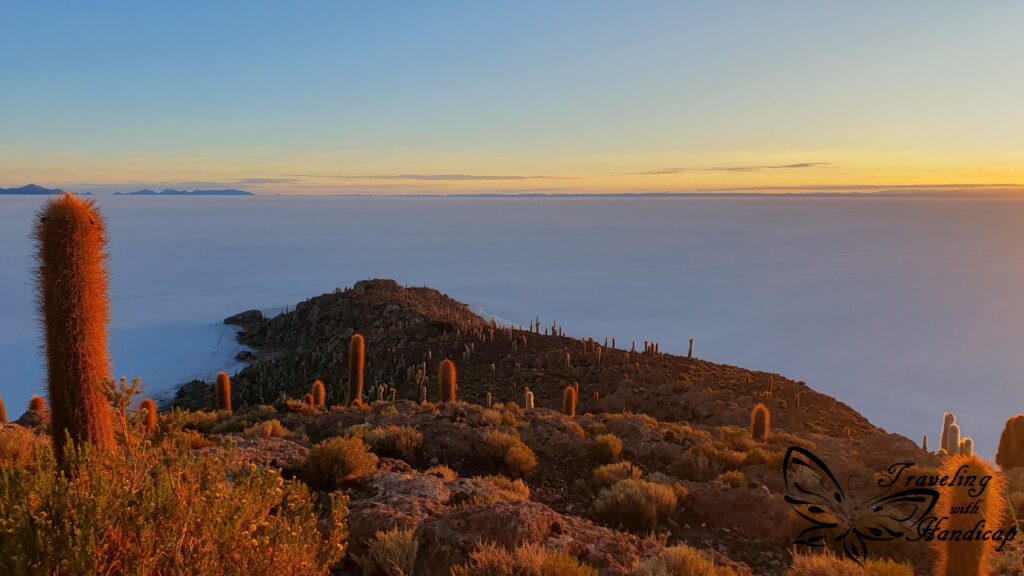

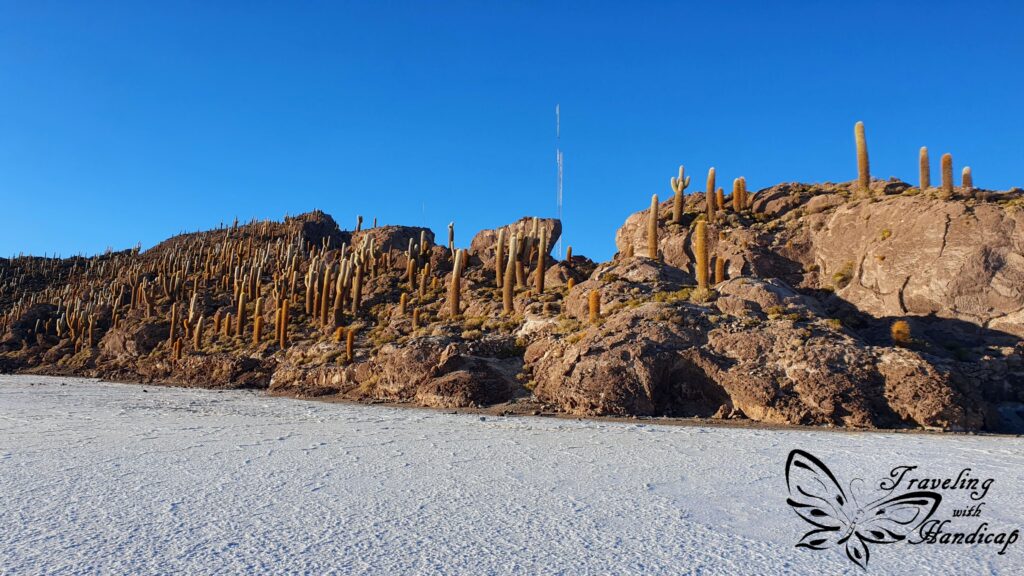
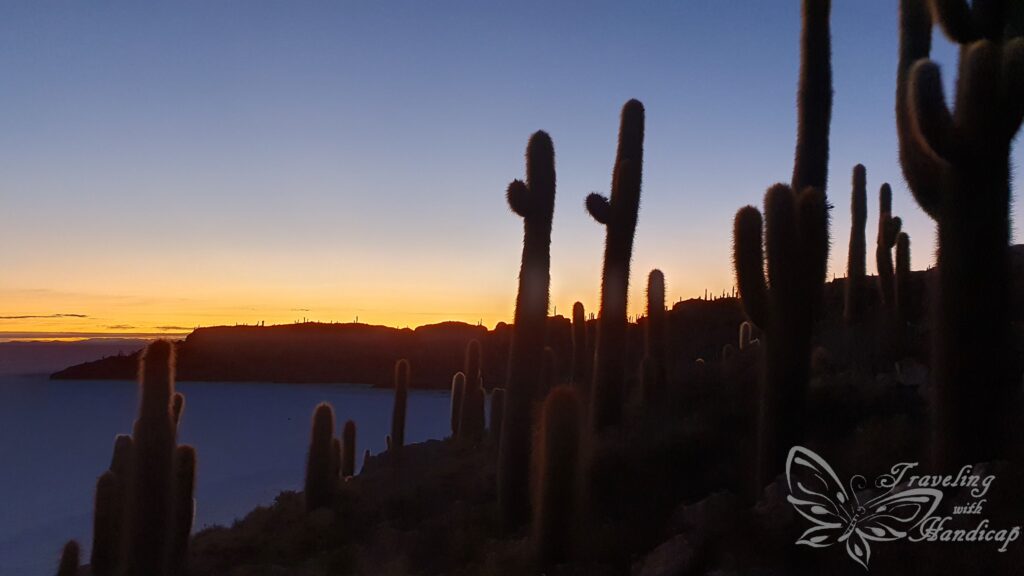
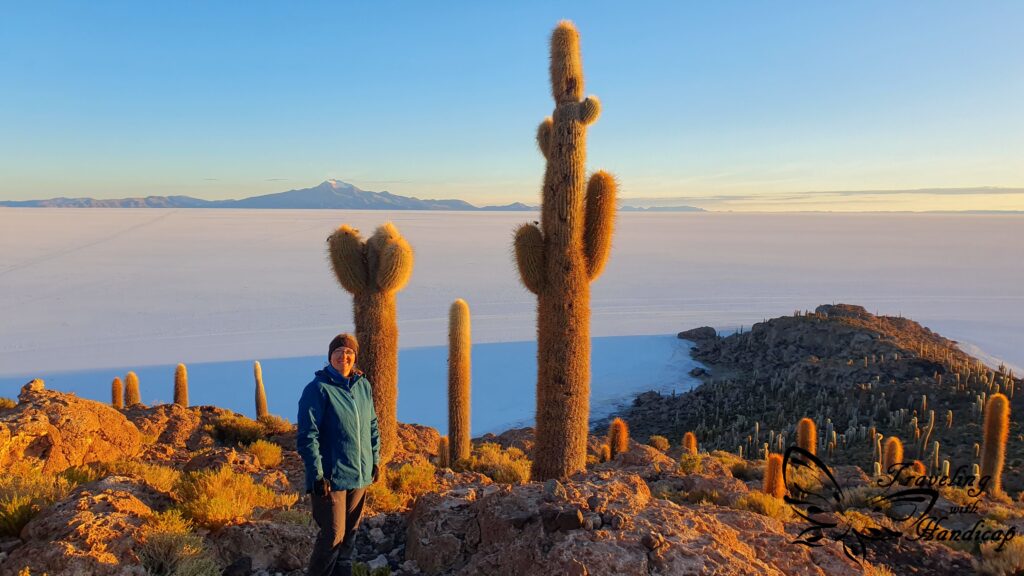
Afterward, we drove into the Salt Flats to take the time for fun pictures, playing with the dimensions of the all white and flat salt. The Salar de Uyuni is the largest salt flat in the world. It is estimated that the impressive size of 10.582 square km contain 10 billion tons of salt. This salt flat is also the biggest lithium reserve on our planet.


Then we went to the first salt hotel that has been built on the Salar including the Plaza de las Banderas with the Rally Dakar memorial.
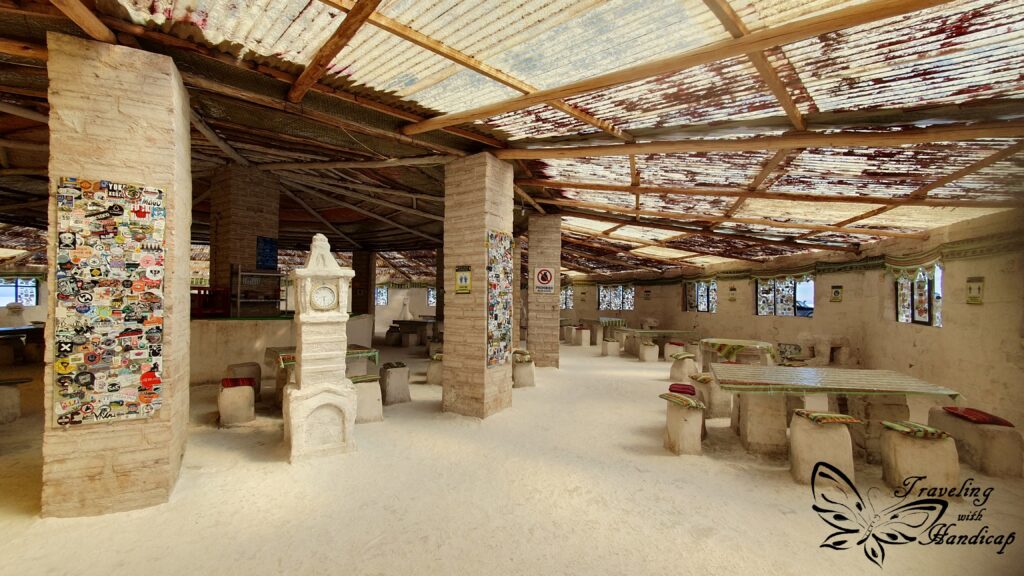


After spending half a day on the Salar, we left it towards Colchani, a small village on the border of the Salar. There, we visited the salt museum, where the whole process of salt processing has been explained to us. Then, we had some time to do souvenir shopping. Next, we continued to our final stop, the train cemetery on the outer border of the town Uyuni.
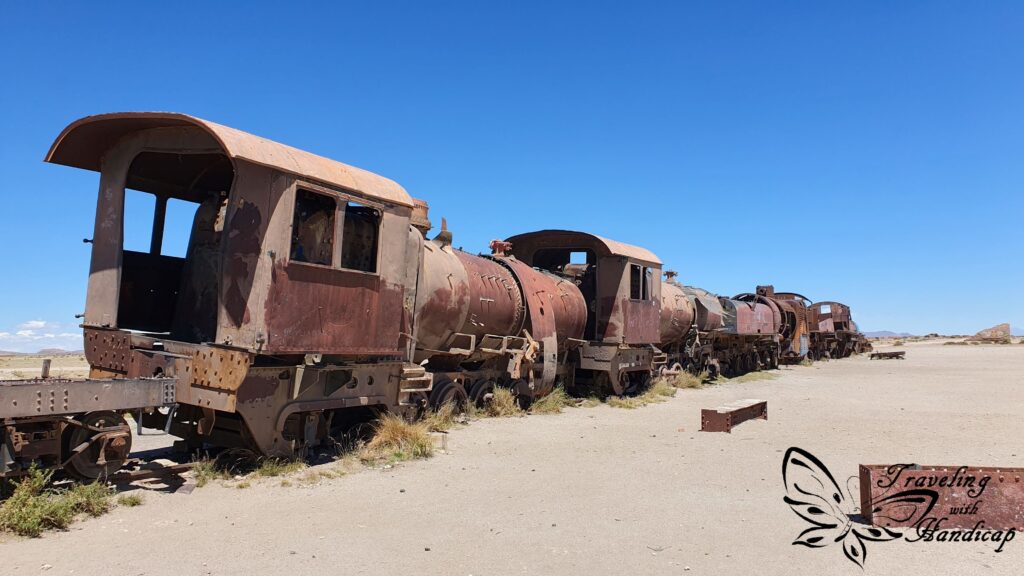
After the train cemetery and a (quite late) lunch, we finished the tour in Uyuni.
Uyuni
The town Uyuni is quite dirty and dusty. Honestly, it doesn’t serve for much more than as the getaway point for all the Salar de Uyuni tours. Most of the tourists I met were just there to either find a tour or sleep for a night before going elsewhere. There are no other touristy things I would recommend the town for.
